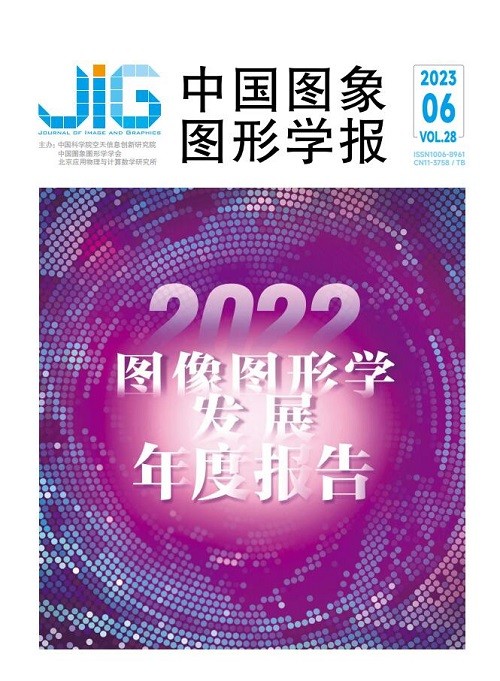
定量磁共振图像的深度学习重建方法进展
摘 要
磁共振成像是一种应用广泛的无创医学成像方法,因其丰富的软组织对比度可以成像人体几乎所有内部结构,包括器官、骨骼、肌肉和血管,已成为临床医学影像诊断的利器。然而磁共振成像存在两大公认的瓶颈:成像速度慢、扫描操作烦琐。深度学习给磁共振成像带来莫大的契机,给传统磁共振加速成像带来新的可能。鉴于该领域的快速发展性质,本文旨在总结文献中报道的大量深度学习和磁共振图像重建相结合的方法,以更好地了解该领域。本文简单介绍磁共振成像在多通道线圈接收的并行加速和压缩感知加速下的深度学习重建方法,其中单对比度图像可通过多通道接收线圈提供的冗余度用于加速,多对比度图像可额外使用不同对比度图像这一维度用于加速,动态图像与多对比度图像类似可额外使用时间维度用于加速,本文也将介绍深度学习在这些方面的发展。随着磁共振成像近年来由定性多对比度成像向定量多参数成像的发展,其中定量成像的图像中可内含多对比度图像,如何借用深度学习提供的能力将定性多对比度图像映射到参数图也是一个难点,近年来这一方向也获得了较快的发展,文中也将针对这方面内容进行调研并介绍。针对上述内容,分别介绍国际研究现状和国内研究现状,拟更好地总结国内外研究的发展的异同和趋势。最后对深度学习助力定量磁共振成像方面进行了展望。
关键词
Progres of deep learning based quantitative MRI reconstruction methods
Ye Huihui, Chen Yuting, Hu Dakun, Li Shizhuo, Liu Huafeng(State Key Laboratory of Modern Optical Instrumentation, College of Optical Science and Engineering, Zhejiang University, Hangzhou 310027, China) Abstract
Magnetic resonance imaging(MRI) is a commonly-used non-invasive medical imaging method. Due to richable soft tissue-related contrast features of human body, medical imaging diagnosis is beneficial from more internal structures-contextual image in clinic, including its organs, bones, muscles, and blood vessels. However, two sorts of bottlenecks of MRI like slow scanning speed and labor-intensive scanning operation are required to be resolved beyond the constraints of hardware and existing techniques. Current MRI has been facilitating in terms of the emerging deep learning based medical imaging technique. To optimize its acquisition time, parallel imaging and compressed sensing combined with the use of multi-array coils, conventional MRI mainly depends on the hardware improvements and new compactable sequence design. First, literature review of deep learning-based MR reconstruction methods are analyzed, including such deep learning issues originated from 1) integration of parallel imaging and compressed sensing of MRI and 2) acceleration of multi-contrast images and dynamic images of single-contrast image. Deep learning-based reconstruction models is oriented to get their generalizability incorporated with multiple datasets, in which MRI data are challenged for multiple factors like its relevance of centers, models, and field strengths. Two decadal development of quantitative MRI technique can provide pixel-level characterization of intrinsic tissue quantitative parameters, such as T1, T2, and ADC. Generally, quantitative MRI is often required to get multiple weighted images under different parameters, and quantitative tissue parameters can be generated via signal model-required pixel-level nonlinear fitting. Compared to the acquisition of contrast images, acquisition and reconstruction duration has become more longer. To accelerate the acquisition and reconstruction or facilitate accurate mapping, extension ability of deep learning has been developing for the reconstruction of MRI fast imaging. Apart from conventional single parameter mapping method, simultaneous multi-parameter mapping techniques have leaked out, such as MR fingerprinting. Compared to single parameter mapping, multi-parameter mapping can be synchronized and accelerated, and more efficient acquisition and inherent coregistration can be used to deal with such complicated reconstruction. Deep learning technique can be as a multifaceted tool to simplify the reconstruction and speed up the acquisition. However, it is still challenged for such constraints like deep learning algorithms and large amounts of training data. Deep learning methods are required to be melted into magnetic resonance physical models and traditional reconstruction algorithms to a certain extent, and to improve the interpretability of the model and alleviate the impact on large datasets, such methods of data enhancement, weakly supervised learning, unsupervised learning, and transfer learning can be involved in as well. A quantitative MRI-relevant unsupervised network can be potentially used for training in terms of different parameter mapping sequences, which can greatly shrink the amount of data samples further.
Keywords
|



 中国图象图形学报 │ 京ICP备05080539号-4 │ 本系统由
中国图象图形学报 │ 京ICP备05080539号-4 │ 本系统由